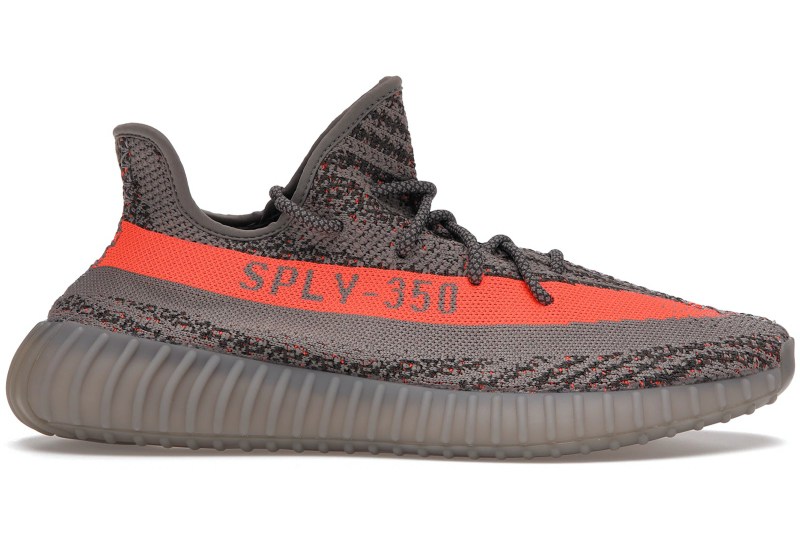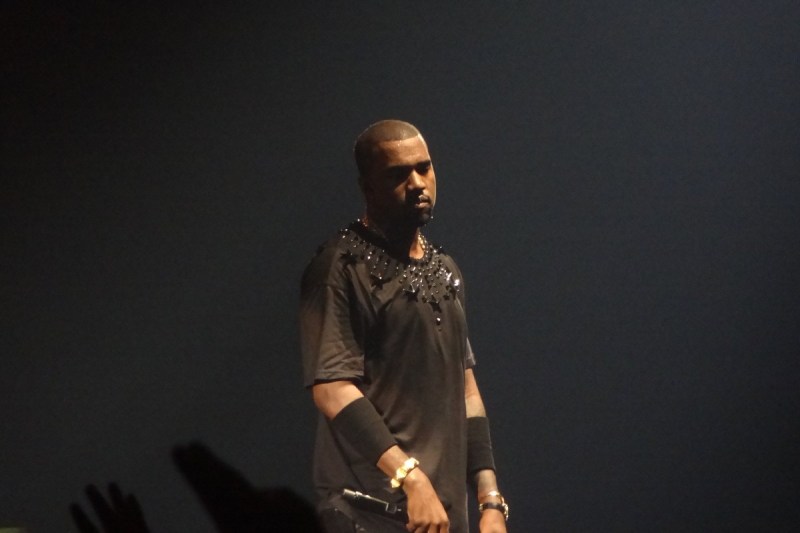On October 3, 2022, Kanye West’s clothing line held what will likely turn out to be its final fashion show. The shirt worn at the show by Ye, as the musician turned designer is know legally named, has become the centerpiece of a two-month-long onslaught of controversial behavior. The renowned rapper and producer has never been a stranger to controversy, often parlaying it to his benefit, but his recent actions have been in such poor taste as to be unacceptable. The problem that we now face as a pop-culture-consuming society is this: How do we reckon with Ye’s legacy in the fashion world? His music career aside, Ye’s impact upon the fashion industry and the general style zeitgeist is monumental and cannot be simply written off.

It’s important to establish upfront that this is not a timeline of events. Enough metaphorical ink has already been spilled detailing Ye’s rash and deplorable behavior over the past couple months. We’ll touch on some of these events only to give context to his legacy in fashion. It’s also important to acknowledge that Ye suffers from mental health issues. He has publicly acknowledged his bipolar disorder — even referencing it in an album title — as well as his unwillingness to cooperate with treatment. This by no means excuses his racist and antisemitic rhetoric, but it does provide a context for that and other irrational behavior.
A complicated history with the fashion industry
As recently as three months ago, Ye easily could have been counted among the most influential figures in the fashion industry. Few people were as loved or as hated among fashion enthusiasts and casual observers alike. Ye’s alluring cult of personality combined with the enormous social clout accumulated through his music career created a fanbase that would buy absolutely any clothing and accessories he sold, regardless of what they looked like. This guaranteed revenue generation garnered Ye some of the most lucrative fashion contracts ever signed. His deal with Adidas alone made Ye a billionaire; the Gap and Balenciaga deals were just additional pocket change.
That same public perception of infallibility also garnered contempt among many fashion industry insiders who saw it as undeserved. To many outside observers who cared about fashion but didn’t buy the Yeezy hype, most of his work was bland and unoriginal. The fact that it sold out at exorbitant prices, only to fetch even higher prices on the resale market, was enough to make aspiring designers envious and editorialists baffled. These feelings prevented the fashion industry community from ever truly accepting Ye as a designer. It appears as if this lack of acceptance began to eat away at his outsized ego in recent years. This would explain his lashing out at industry critics before the Yeezy show, personal attacks upon Vogue editor Gabriella Kareefa-Johnson, and his proclaimed beef with LVMH CEO Bernard Arnault.
Despite how you may feel about Ye as a fashion designer — if you even consider him a true fashion designer at all — it’s undeniable that he has been one of the most influential figures in fashion over the past decade. Through his work with Adidas, he was the first public figure to dethrone Jordan as the most sought-after eponymous sneaker line. The team that he assembled in the early years of his Yeezy brand featured generational talent. Though many of these designers were already building a name for themselves, he provided a pop-culture spotlight for Tremaine Emory, Jerry Lorenzo, and Virgil Abloh, among others. Whether you want to credit this to Ye or not, those three gentlemen are a part of the largest group of prominent Black designers that has ever existed in the history of fashion. His influence on the personal style of the Kardashian sisters and, in turn, their collaborative work with Balenciaga established one of the definitive aesthetics currently driving the fashion industry.

The Paris show and the aftermath
Ye’s shirt at the Yeezy show turned out to be only the beginning of a month-long tirade of offensive and hurtful behavior. The now infamous tirade cost him his partnerships with Adidas and Balenciaga; he ended his Gap deal in September. It also got him dropped from his talent agency and temporarily banned from both Instagram and Twitter. JPMorgan Chase cut ties with the Yeezy line. Ye lost approximately $1.5 billion of his net worth in the process, according to Forbes.
These recent outbursts of hate that put a halt to Ye’s fashion career and placed a large and uncomfortable question mark over his public image do not represent some new change of opinion. It’s not like a holy man finding religion and declaring it to the world; it’s more like an inebriated relative blurting out obscenities at the dinner table. We were all warned about Ye’s feelings on race in the past. In a 2015 interview with the French show Clique TV, he said racism was an outdated concept that no longer existed. In 2018, he told TMZ that he thought African slavery in America was a choice. These incidents flew low enough under the radar and were spaced far enough apart to be overlooked by society at large. This time, however, the vitriol came out too frequently and too quickly to ignore. Now the truth is inescapable, and we’re forced to grapple with the question of what to do with this enormous legacy left among the ashes of Ye’s fashion career.
The first step is to acknowledge that this legacy was not built upon the merits of Ye as a fashion designer. If anything, he was more of a curator of images and concepts as well as an excellent judge of talent in actual fashion designers. The initial success of Yeezy in 2016–2018 should be attributed to the team Ye put together. Their fingerprints are all over the line, especially with Virgil’s neo-workwear inspiration, Emory’s exaggerated silhouettes, and Lorenzo’s muted monotone color palettes. The team behind the early Yeezy seasons should continue to be celebrated for their contributions to the brand, even if the namesake of the brand is not.
Ye’s biggest footprint — no pun intended — on the fashion industry certainly comes from his shoe deal. In light of the details that have come out since the dissolution of the partnership, it’s unclear how much creative credit for the Yeezy shoe line’s success should go to Ye and how much should go to Adidas. Ye, of course, demands all the credit, but Adidas has confirmed that it owns every bit of the intellectual property involved in the partnership. From a legal perspective, Ye gets no credit beyond licensing out his brand name.
Adidas certainly produced shoes with a similar look to Yeezys before partnering with Ye. The Yeezy slides were little more than a monotone version of classic Adidas slides with an exaggerated sole. Adidas has announced that it will continue to sell designs created in partnership with Ye, only without the Yeezy title applied to them. As consumers and appreciators of the Adidas Yeezy collab, we’re free to cede as much credit to whichever party we choose, but the truth will probably always be disputed. What is indisputable is that Adidas came out on top in the end.
Separating Yeezy from Ye
For most Yeezy fans, Ye’s legacy will fall approximately into one of three categories. Many diehard fans have stuck with him through controversies in the past and will continue to stick with him, despite all the social backlash that decision will provoke. After Adidas ended the Yeezy sneaker line, resale value skyrocketed for the now defunct line. Other Yeezy fans have seen enough from the figure to ruin the brand entirely. They see the purchasing and wearing of Yeezys as condoning Ye’s behavior. There are plenty of casual fans, however, who will take a moral middle ground. They are able to dissociate the rap legend from his sneaker line and will continue to wear sneakers they already own and still like the look of while denouncing his behavior.
That dissociation and the moral gray area that comes with it represent the reality that the fashion community now has to face. The enormous impact that Ye the designer had on the fashion world over the past decade will always be there. The influence he had on prevailing aesthetics and the appreciation of Black designers will be felt for years, if not decades, to come. For example: Virgil Abloh was arguably the most important designer of his generation before his tragic death in 2021 at only 41 years old. The fact will always remain that most people first heard about him through his work with Yeezy. If Ye’s fashion career is indeed over, we have to accept the good with the bad that came with it.
There is no way to tell what the future holds for Ye the person, not to mention his iconic music career, but the artist formerly known as Kanye West’s fashion career leaves a prolific but troubled legacy. We can only hope that Ye seeks and accepts the mental health help that he needs. We must also recognize the hurt that his actions, both recent and long ago, have caused. If his goal was to get a reaction, then it certainly worked. This saga has furthered a cultural dialogue about racist and religious hate speech, the censoring of social media, and accountability of corporations for the actions of individuals they do business with. None of these topics have easy or definitive answers, but they will now be wrapped in the culmination of Ye’s fashion legacy.
So where does that leave the fashion community in the wake of Yeezy? We have to accept the impact Ye had, regardless of our personal feelings on the man. It takes a culturally enormous figure to just step into a world as dense and enormous as that of fashion and have an immediate and sustained impact. Ye did that in a way no one else ever has. Yeezy may only trade on the resale market from now on, certainly with enormous profits, but, for better or worse, the brand and the man behind it will always have a chapter in the history of fashion.





